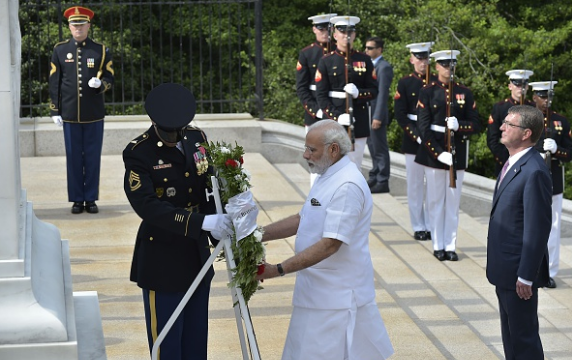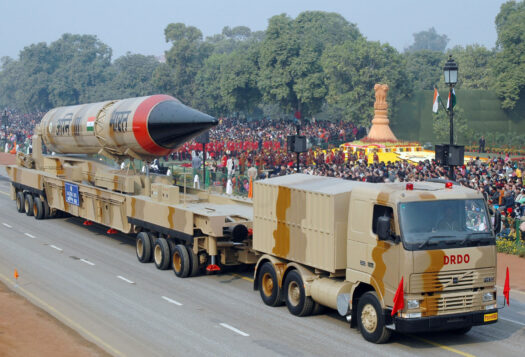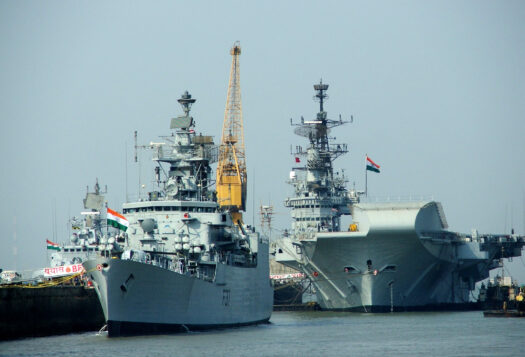
In a recent speech, Defense Secretary Ashton Carter stated that the U.S.-India defense partnership would become “an anchor of global security.” In turn, defense and security ties, as Darshana Baruah and Sylvia Mishra note in their articles on Modi’s June visit to the U.S., have become an anchor of the U.S.-India relationship. The two SAV authors’ pieces provide before-and-after perspectives on what was expected to be a major takeaway from the trip: progress on these ties. Baruah identified maritime security as a significant area of cooperation, noting the continued (and upgraded) Malabar maritime exercise and progress under the framework of the 2015 Joint Strategic Vision for the Asia-Pacific and the Indian Ocean Region. Mishra outlined some of the outcomes of the Modi-Obama summit, including the finalization of the text of the Logistics Exchange Memorandum of Agreement, the designation by the Obama administration of India as a “major defense partner” (though the consequences of this remain to be seen), as well as a reiteration of the desire to work together regionally and globally. And both pieces identified a key driver—and the strategic context—for the development of the relationship on this front: the rise of China.
The Modi visit, in some ways, reflected the continued normalization of the U.S.-India relationship, with summits becoming an annual occurrence in practice. It also made clear that the development of the relationship is a process, with leader-level visits serving not as ends in and of themselves but as momentum-drivers and action-forcing events. As Baruah’s piece notes, the foundations for the visit were laid by agreements reached by previous governments and as Mishra’s piece suggests, much of what was announced was the outcome of work over the last few months—including during multiple Carter meetings with his counterpart Defence Minister Parikkar. The Malabar, India-Japan-U.S. trilateral and East Asia dialogue, for example, preceded the Modi government and made the Joint Strategic Vision possible. But the Modi government has also shown itself willing to go further—driven partly, as Baruah assesses, by an interest in maritime issues, as well as desire to be seen as a regional and global actor. This latter goal indeed was evident in the Indian prime minister’s speech to Congress.
In terms of India’s broader regional role, both articles mention the South China Sea—Baruah noting that India has emphasized working through/with the ASEAN countries on this issue rather than countries like the U.S., and Mishra mentioning the lack of explicit mention of it in the joint statement (compared to previous Modi-Obama documents). But it’s worth noting that the Modi government has mentioned the issue explicitly in joint statements, not just with the U.S., but with Japan as well. Moreover, the joint statement for this visit did mention support for freedom of navigation and overflight, as well as peaceful resolution of disputes in the maritime space. At the Shangri-La Dialogue held in Singapore just before the Modi visit to the U.S., Parikkar also explicitly outlined India’s position on the South China Sea. Finally, while India has been unwilling to conduct joint patrols with the U.S. in this area as Baruah rightly notes, Indian and American ships did recently pass through it one after the other on their way to the Malabar exercise in Japanese waters.
While it perhaps wasn’t in the remit of the articles, a broader framing of the defense-and-security takeaway is the development of security ties beyond the defense or regional security baskets, especially in the counterterrorism/homeland security and cybersecurity arenas. Prior to the visit, for example, the U.S. and Indian governments reached an agreement “to facilitate the sharing of terrorist screening information.” And, while it didn’t get much attention, also noteworthy was the “Framework for the U.S.-India Cyber Relationship” announced during the visit that is expected to be signed within two months. The document—the first of its kind for either country—lays out the shared principles for the relationship and potential areas for cooperation, particularly related to cybersecurity.
Both Baruah and Mishra identified another key takeaway—and ask from India—from the visit: a reiteration of U.S. support for Indian membership of the NSG, and a call for other members to support India’s application. (With this and the mention in the joint statement of “deepened collaboration on UN terrorist designations,” the Obama administration likely also wanted to draw a contrast implicitly to China’s approach on both issues.)
Mishra noted another outcome: Westinghouse and NPCIL’s announcement of the commencing of “preparatory work” in India for six nuclear reactors. The reason this is crucial—and skepticism remains that there will be movement beyond this—is that the lack of progress on this front has been cited by many in the United States as evidence of India’s inability to deliver. Also on the energy front was another major takeaway: progress on cooperation related to the deployment and financing of renewable energy in India. On the climate change front, while Modi might not have gone as far as the administration would have liked in terms of announcing a timeline for Indian ratification of the Paris agreement, there was a sense that the prime minister remains committed on this issue. Whether that sense remains is unclear after suggestions from Delhi that ratification was linked to Indian membership of the NSG. (It is also unclear whether or how that linkage would necessarily affect Beijing’s approach while causing chagrin among some of India’s supporters, though it might be intended to get those supporters to press Beijing further and push some undecideds to move into the support column). The Indian government, in turn, might have liked greater support from Washington for its recent unsuccessful bid for NSG membership and will likely watch developments on this front over the next few months closely.
Another key takeaway was what was missing—much progress on the economic front, including in terms of a Bilateral Investment Treaty or Indian membership in the Asia-Pacific Economic Cooperation (APEC). Rather than governments, what business does is as—if not more—crucial in the economic cooperation sphere. But progress on this front in terms of government policies is important—not least because it will remain a key potential driver or spoiler of the relationship.
***
Image 1: Chip Somodevilla-Getty Images News, Getty
Image 2: Mandel Ngan-AFP, Getty
Image 3: Alex Wong-Getty Images News, Getty




